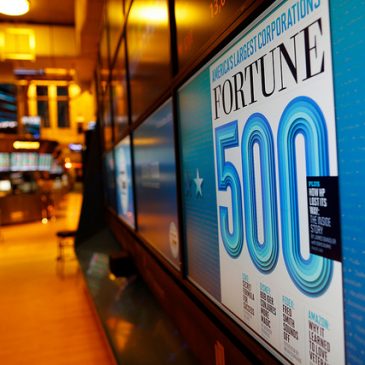Blog
How Socially Conscious Companies Are Redefining What a Brand Can Be

Some of the world’s most innovative and successful companies like Starbucks, Nike, and Salesforce are prioritizing sustainable business practices to not only appeal to environmentally conscious consumers, but because it makes good business sense.
While intent is a good starting place, as Dave Ramsey said, “A goal without a plan is just a dream.” Therefore, it’s essential for businesses to have uniform metrics to measure, monitor and improve upon how they use natural resources to not only reduce their environmental footprint, but also avoid the risk of natural crisis.
“It is increasingly apparent that traditional financial accounting practices are failing to recognise all relevant business impacts and risks” Liz Barber, Group Director of Finance and Regulation at Yorkshire Water, said. “The Natural Capital Protocol is a real world first in bringing structure and a standardised common framework for natural capital assessment.”
Natural Capital is defined as natural resources themselves (such as water, plants, minerals, etc.), the services they provide, and the value they create for society.
The Natural Capital Protocol helps businesses scope, measure, and value natural resource dependencies and impacts so they can take progressive action.
The Protool helps businesses clarify the “why”, “what”, “how” and “what’s next” of their natural capital management process in 9 distinct steps: 1) Get started, 2) Define the objective, 3) Scope the assessment, 4) Determine the impacts and/or dependencies, 5) Measure impact drivers and/or dependencies, 6) Measure changes in state of natural capital, 7) Value impacts and/or dependencies, 8) Interpret and test results, 9) Take action.
By defining natural capital, monitoring dependence and following an action plan, businesses can go beyond lip service to sustainability and actually walk the walk.
To accurately follow the protocol, businesses must gather substantial information about their resource use and related ecosystems. The Natural Capital Coalition developed the Natural Capital Protocol Toolkit (NACP) to help companies clarify which pre existing metrics and rating systems to use at each stage of the protocol. The Coalition is also developing industry specific guides so brands can design the strategy that works best for their sector.
1) Increase Operational Resiliency: The Protocol can highlight supply chain vulnerabilities and opportunities for improvement, which can save you money in the long term and increase operational resiliency.
Jaguar Land Rover applied the Natural Capital Protocol to identify aspects of their value chain that could save them money, increase resource efficiency, and reduce the environmental footprint of their operation.
Specifically, the brand found that aluminum had a relatively large environmental footprint in relation to the amount used per vehicle. To address this issue, Jaguar Land Rover ramped up aluminum recycling efforts, which not only reduced natural resource dependencies and environmental impact, but also saved them money.
The automaker was able to take their planning to the next level by using scenario modeling to optimize the value chain in the long run by taking account for natural resource impacts, dependencies and changing consumer demands.
Ultimately, utilizing the protocol or a similar framework can help you run your supply chain with more efficiency, and improve your businesses ability to maintain resource flows while keeping costs consistent regardless of market fluctuations.
2) Test sustainability initiatives: While applying each step of the Protocol to your entire value chain is a powerful and effective way to measure and improve upon your cradle to grave sustainability initiatives, it can also be applied to a small aspect of your operation. The insights that you get from a single product or stage of your supply chain can provide valuable lessons that can be gradually applied throughout the rest of the business.
AkzoNobel, an international chemical manufacturer, applied the Protocol to a single downstream product to reduce internal dependencies and share their dedication to sustainable business with consumers.
The chemical maker chose to apply the protocol to a book, a product they don’t make themselves but do supply the bleaching agent for. While they found the bleaching agent did not have substantial impact on the overall resource intensity of the product, they did work with pulp manufacturers to assess ways to reduce the impact of book making overall.
AkzoNobel chose the tangible end product of a book because it was something that consumers could relate to, which made it useful for brand storytelling.
Essentially, Addressing a single aspect of your business or product is an excellent way to start implementing sustainability protocols, afterwhich you can expand to your entire supply chain.
3) Improve internal communication and business strategy: Businesses with complex information flows and multiple departments can create communication siloed in which members of separate departments rarely speak. The Natural Capital Protocol is an excellent way to highlight information pertinent to the entire business and bring different disciplines together to address core issues.
Skanska, a multinational design and construction company, found that different aspects of their internal team were not cohesively integrating data about natural capital risks and opportunities.
The Protocol helped them identify these communication gaps and strengthen internal decisionmaking by bringing teams together – like environmental consultants and finance professionals – to build more robust business strategies. The development firm also identified gaps in their data, specifically in relation to measuring impacts and risks associated with biodiversity.
Ultimately, the protocol helped Skanska strengthen internal communication and identify areas in which they lack information. Moving forward, the company plans to close department silos, monitor additional natural capital risks and opportunities and incorporate these findings into their 2020 Accounting for Sustainability Strategy.
The key takeaway is that many companies lack robust analytics on natural resource inputs that drive product and service offerings. The Natural Capital Protocol is an excellent framework to guide your business to account for the vulnerabilities in your supply chain and the impact brand has on natural resource. By addressing potentially costly uncertainties and promising opportunities you not only hedge against the risk of natural catastrophes and resources scarcity, but also build a foundation to improve sustainability and generate story angles to showcase how your brand is making a conscious effort to operate a socially outstanding business.
Connect with We First!
Twitter: @WeFirstBranding
Facebook: WeFirst
LinkedIn: WeFirst
Youtube: WeFirstTV
Join our mailing list and invite Simon to speak at your next event or meeting.

How Socially Conscious Companies Are Redefining What a Brand Can Be

Purpose At Work: How Starbucks Scales Impact By Listening To All The Stakeholders In Our Shared Future

5 Reasons Why Impact Is Competitive: Insights From the World’s Top CEOs

